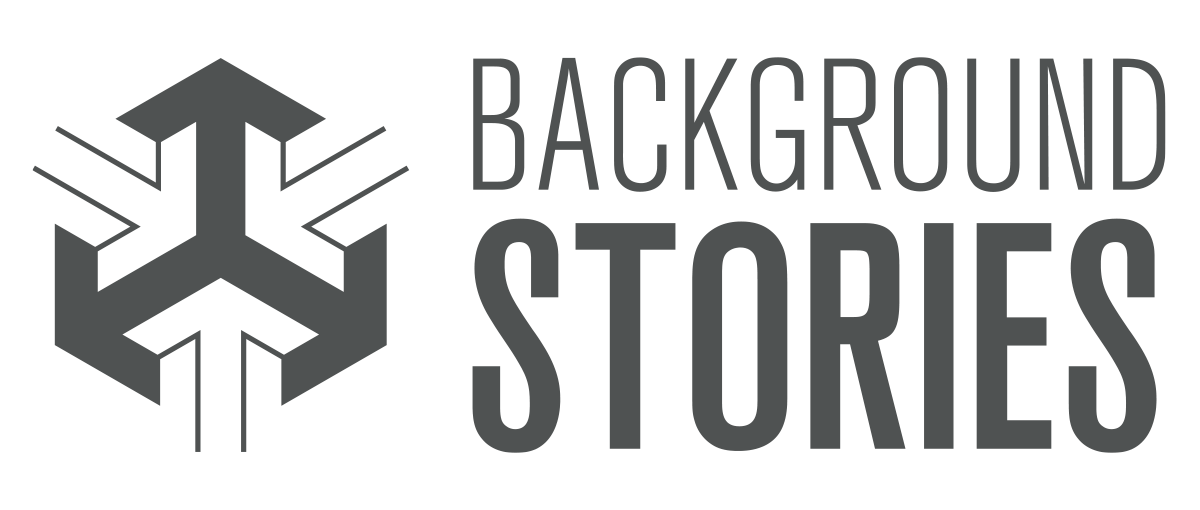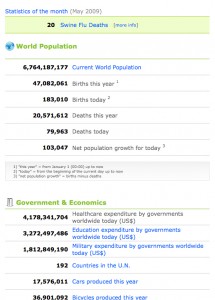Carbon foot-printing has made its way onto the plates of people living in Sweden.
Continue reading
Category: Data Visualization
Linking Everyday Gestures with Digital Details
Pranav Mistry combines standard, everyday gestures with digital information. His solutions -which include the SixthSense wearable computer – have potential to bring real transparency into sustainability, and enable people to literally immerse themselves in their own ecological footprints. Continue reading
Carbon Footprinting Transit
Twin Cities Metro Transit now links carbon footprint data with bus schedules when you plan a trip online.


The website averages bus CO2 emissions over the distance of your journey to show the visitor what positive impact they can contribute (in terms of carbon saved) for each public-transit journey made.
This is a great tool to help consumers understand the impact they have as an individual – even if the results are a bit ambiguous (it’s highly doubtful that most consumers understand what 6.2 lbs of CO2 means – and unfortunately no comparison is provided to help them put it into context).
Tracing A Box’s Life
Colombia Sportswear is asking you to ‘Consider the box’ with their project: A Box Life. A Box Life brings awareness to an often-overlooked part of mail-order products’ life-cycles: the packaging.

Not only is it a clever way to encourage people to reuse packing materials, but telling the stories behind the travels of things also acts as a tool for transparency, and reminds consumers of how individual actions impact sustainability.
read more: Springwise
Mapping the Mississippi: Through Time
In a beautiful example of layered visual information, Harold Fisk mapped a portion of the Mississippi River in 1944. The series of plates show the changes in the path of the river through time. I’m drawn to the simple and clear detail, effective color palette and the amount of information communicated through this simple technique.
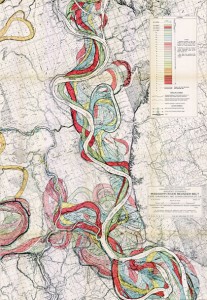
The full map is available at the US Army Corp of Engineers.
Next Gen Barcode
A new type of barcode is coming.
As announced by a recent BBC Technology article, the tiny (3mm) bokodes can contain a much more information than traditional barcodes, or even other digital cousins like qr-codes.The codes use light and reflection to contain code, and will be readable by a standard cellphone camera.

The truly interesting part of this technology is the ability to send different information out to different directions. For example, viewing a product’s bokode head-on could tell you different details than a product further which you’re not looking directly at further down the aisle.
Bokodes are yet in development stage, but they are a strong indication of technologies emerging to make information on transparency accessible to the everyday consumer.
GoodGuide coming to iPhones
Via a New York Times article, barcode-reader iPhone apps will put product info in consumers hands at point-of-sale.
GoodGuide is already a beta database of info on products will help consumers know what is in the products they consider purchasing.
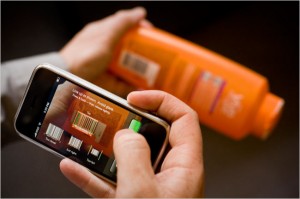
The service reduces lots of complex info into a single number (the higher the number, the better the product overall). Though the purpose of the system is to create transparency on products, such a single-number approach lacks transparency. Consumers also need education on what’s behind the number. A more visual approach incorporating icons to reference each product’s background story could help.
Thanks Craig!
Disclosing Dish Soap
Seventh Generation’s liquid dish soap bottles are sporting an in-depth ingredient label – under the existing label.
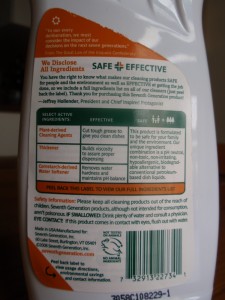
The peel-away outer back-panel gives a text-heavy overview of the company’s safety criteria and commitment to transparency. Inside, an extended eco-label takes the first steps toward integrating statistics: Minimally illustrated with a home icon, the statement reads that ‘if every household in the U.S. replaced petroleum-based dish soap with plant-based… we would save 86,000 barrels of oil (the equivalent to heat and cool 4,900 U.S. homes per year).
Its nice to see a comparison that puts so many barrels of oil into a meaningful perspective for the purchaser.

The peel-away label allows for 2 additional panels for the consumer to transparently uncover information, but the space could have been used even more effectively: I’d love to see a more life-cycle oriented approach applied to this design format, and the icons used to highlight information, rather than to advertise the company’s other product offerings.
Cross Section of History
A Giant Sequoia in New York’s American Museum of Natural History reveals centuries of history juxtaposed with the tree’s growth rings. The pairing of dates of history with centuries of growth rings gives us deeper understanding of how time passes and things change: as seen both in nature and in civilization.
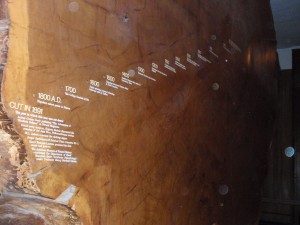
A definite ‘background story’ – pairing visual cues with data and textual information. This visual reference to nature’s growth is a peak into the life story of the tree: marking the years of fast and slow growth. The numerical years provide a reference to our own history: with additional stories of what happened in civilization corresponding with each growth ring. A good reminder that everything changes.
On the topic of trees, the image below is from the Moderna Museet in Stockholm (by an artist whose name I seem to have unfortunately misplaced…). Following growth rings, this artist carves away the ‘years’ of a length of log: revealing the shape of the tree’s younger self.

